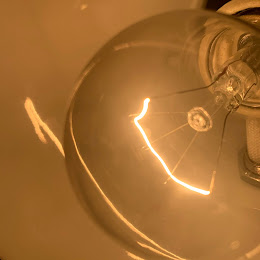hygge home: lighting
In order to live the hygge way, we need to be aware of our senses: see, hear, feel, taste, and smell. This helps us be present. Most of these can be incorporated and stimulated by the design of our living spaces. A few months ago, I attended a webinar called "The Science of Hygge: Cultivating Health and Happiness at Home Amidst External Crisis" that was presented by Joan E. Atkinson of Spirit House Holistic Interiors. Joan is a holistic interior designer who coaches clients on how to transform their spaces, while also focusing on their mental, emotional, physical, and spiritual needs. She discussed six different ways to implement hygge philosophy into the home.
In this post, I will be covering her first principle, which is lighting. Light is important to brighten up the dark Danish winter. Surprisingly, it also plays a role in our health and well-being.
Types of Light
- Dappled Light
This light mimics the natural world like a soft light that comes through tree branches. Joan gives the example of Moroccan lanterns because the punched-out design pushes the light through cutouts that reflect that pattern of light on the space around you. There are also light-up trees that reflect the branching pattern on the walls around it. You can use anything that divides light, whether that is the light itself or an object obstructing the full light. You don't even have to go out and buy new lights. You can cut out a design in tissue paper and wrap it on the bottom of light or around a lampshade.
- Natural Light
This boosts our moods, gives us Vitamin D, kills bacteria, and mirrors our circadian rhythm. It also helps us feel integrated with the natural world that surrounds us. If you don't have a significant source of light in your home, you can hang mirrors to reflect the light that you do have. Make sure to clean your windows and open your blinds or curtains every day.
- Candles and Fire
We can experience the smell of the candle/fire and the sounds of it crackling. It can remind us of safety and nourishment as we remember the ways it was used for cooking, light, and protection from threats such as wild animals. It provides a source of life and creates an intimate setting with loved ones. According to the European Candle Association, people in Denmark buy the most candles out of any other country in Europe.
Layers of Light
Layering light gives you more control over your space and helps you feel more relaxed. You can turn on different lights depending on the time of day or what you need the light for. The closer to the end of the day, the less light I like to have on at once. I like having ambient light on during the day when I need to get important tasks done. However, I only like accent lighting or task lighting at night because it helps me wind down. When you change lights for a certain time, it puts you in the mental space to do what needs to get done at that time.
- Ambient Lighting
This is the general overhead light that floods your space with light. It is what allows you to see with a simple on/off switch and is probably the first light you turn on when you enter a room.
- Accent Lighting
This lighting serves a more decorative purpose that adds a touch of style and personalization. Some examples include sconces, string lights, or salt lamps. These lights don't particularly help you see better, but they can contribute to a cozy environment. I personally don't like an overbearing single room light because it feels sterile.
- Task Lighting
This light provides the necessary light to complete a task. It is generally a smaller source of light in one specific area where you don't need the full light to complete a task. Some examples include lamps or undercabinet lighting.
Warmth of Light
- Warmer Light
Warmer lights contribute most to creating a hygge environment. They are particularly important in the morning and evening because they can mimic the warmer tones in a sunrise or sunset. The body wakes up more gently and the mind is prepared to fall asleep.
- Cooler Light
During the day, daylight is preferred simply because it is what is natural and accessible. If you want to, cooler light temperatures can also be used during the day because that is what sunlight produces.
Applying These Concepts in My College Apartment
These accent lights in my bedroom help my home away from home feel more cozy and comfortable. These are two sets of string lights. The one on top is hung around the perimeter of my ceiling. The second one handing around the shelf brings in a touch of nature with the leaves mixed in.
This is my desk lamp task lighting that I turn on when I sit at my desk to do school work. Since this lighting is warmer and doesn't fill my whole space with bright light, I like turning it on before bed to put me in a relaxed mindset.
Share ways you plan on incorporating these concepts in your space down below!











I never knew there were all these different ways of looking at light; it makes me rethink my light placement.
ReplyDeleteI like the info on natural light. I guess that is why I like to be near windows. Also love candles. I’ll have to look into string lights. Thanks
ReplyDelete